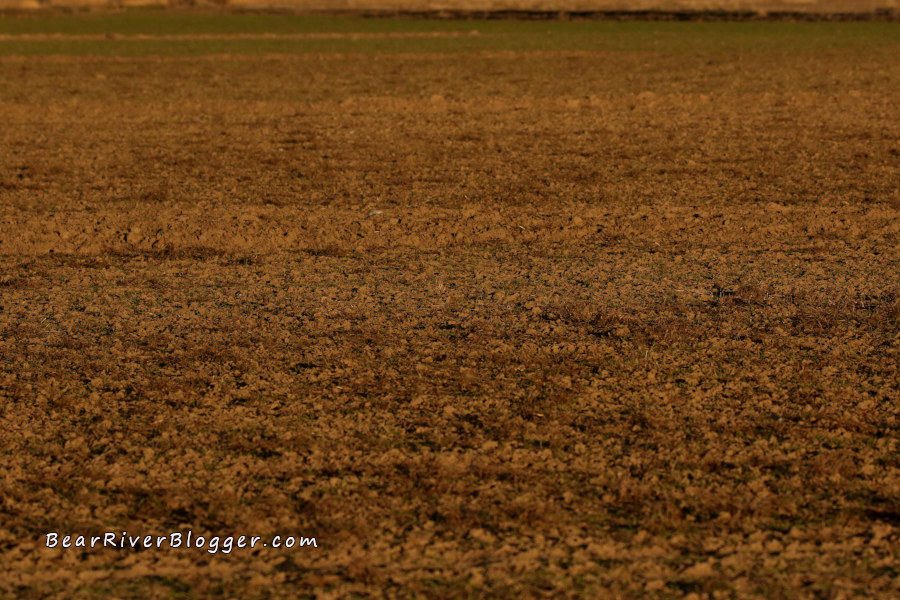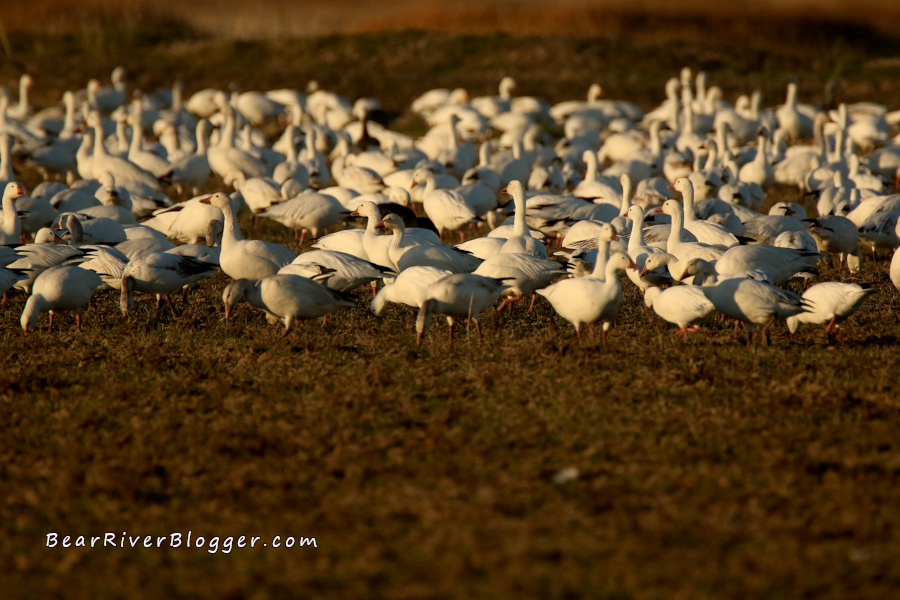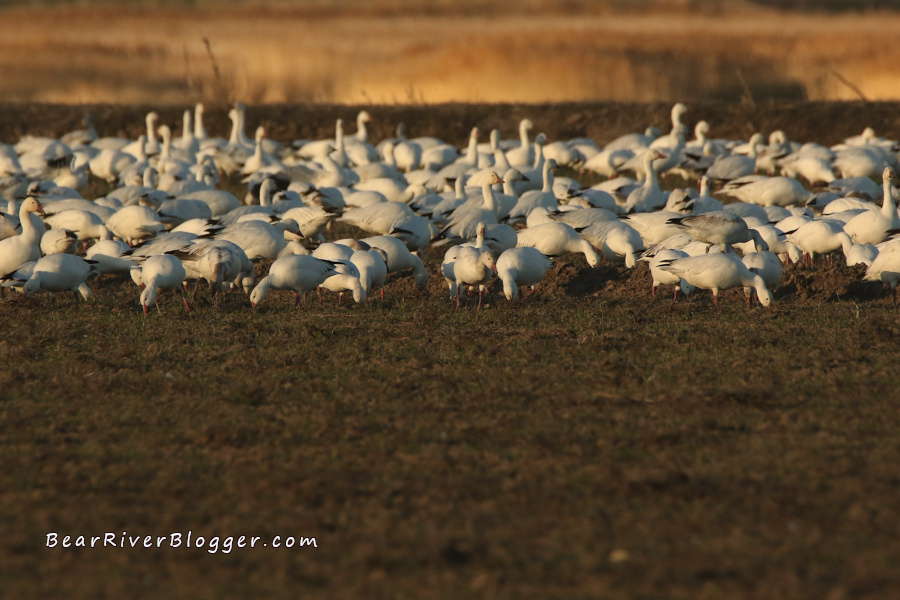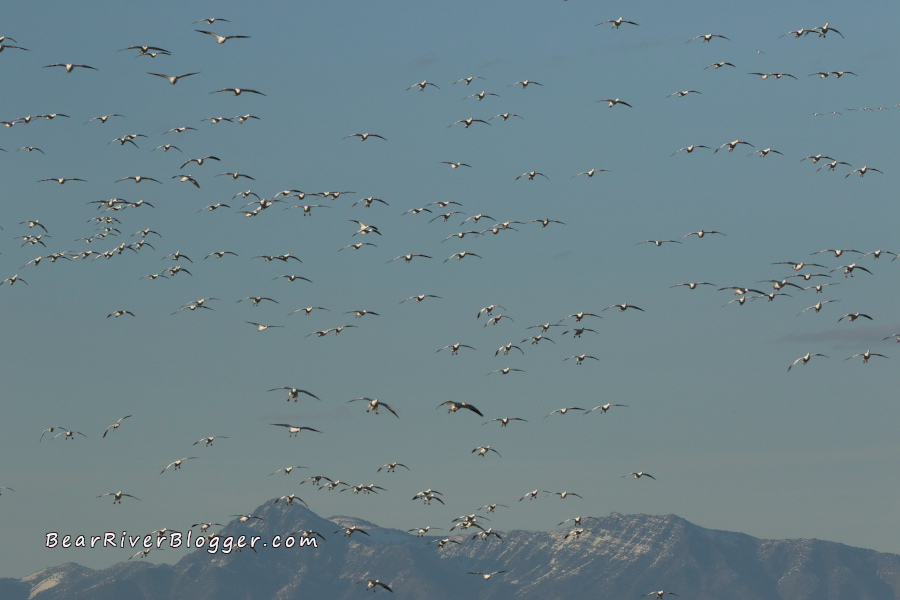Suffice it to say, I’m a birdwatcher, through and through, and I love it when thousands of snow geese, reportedly as many as 20,000 birds in some years, filter through Box Elder County, Utah for a few weeks during spring migration on their way to the arctic tundra for the breeding season.
It’s a natural phenomenon to behold, for sure, one that can’t fully be described by words alone or even appreciated through video rather only in person can thousands upon thousands of noisy geese flying right overhead be fully enjoyed and truly experienced.
Not everybody, however, shares my same level of enthusiasm for the snow geese during February and March as local farmers oftentimes curse the day these migrating snow geese found the small farming town of Corinne, Utah, and adopted it as their annual resting and feeding place for a few weeks during late winter and early spring.

The reason for this lack of excitement is simple, snow geese do a lot of agricultural damage to crops such as winter wheat, a grain that is planted, germinated, and actually starts to grow in late fall, resulting in a well-sowed winter wheat field that looks like a thick, lush, green lawn by springtime.
Spend any amount of time in farming country where snow geese migrate through during spring and you’ll soon find out hungry snow geese love fresh, young wheat shoots, oftentimes pulling them up to eat with root and all if the ground is soft enough.
Place 5,000, 10,000, or more snow geese together in a 40-acre winter wheat field, for example, and it only takes a day, maybe two, before substantial, expensive, and irreversible crop damage is done, damage that without crop insurance the farmer has to shoulder himself.
Now multiply that scenario by these same snow geese feeding twice daily, once both morning and night, for several weeks or more and numerous local winter wheat fields can be damaged if these geese aren’t immediately chased away, something that’s not as easy as it sounds as many times the geese come right back a few minutes later once the farmer has left or, even worse, will feed during the night to complicate matters even more.
That’s a scenario I actually watched earlier this week as many thousands of snow geese were chased out of a winter wheat field one evening, shown by the video below, by the farmer but a mere 10 minutes later thousands of those same geese returned to continue grazing the tender wheat shoots.

That particular wheat field, shown in one of the accompanying images, is now a mostly barren dirt field after only a couple days of feeding by the voracious and hungry snow geese.
Sometimes, the snow geese will pick a harvested corn field to feed in, one that is preferred by farmers since no real damage can be done as the grain was harvested during the fall, but, typically, those types of fields have limited amounts of feed left on the ground meaning the snow geese rarely feed in them when winter wheat fields are available.
The snow goose problem has become so extensive in parts of Utah that a late-winter goose hunt has been implemented by the Utah Division of Wildlife Resources to try and keep the snow geese out of the winter wheat fields.
However, in Box Elder County, Utah, namely the small farming town of Corinne which is always affected by the snow geese each year, the hunting season ends in early March when the snow goose numbers are just starting to peak, leaving no real protection for the winter wheat fields except for a vigilant farmer watching over his crops twice daily for weeks on end until the geese are gone for the season.
The question often arises about extending the snow goose hunt past its March 10th deadline but due to limits set by the Migratory Bird Treaty Act, legal regulations set between the United States, Canada, Mexico, Japan, and Russia to sustain migratory birds that fly between these countries throughout the year, hunting seasons cannot extend before September 1 or go beyond March 10 and can only have a maximum of 107 hunting days allowed per season per groups of migratory game birds.

In other words, even though snow goose hunting does help keep the geese out of the winter wheat fields, there is no legal way to extend the hunt beyond March 10 when the snow geese are in Utah doing extensive damage without altering the Migratory Bird Treat Act with all the above listed countries.
That leaves, unfortunately, farmers growing winter wheat in Utah, Idaho, and Montana, for example, not to mention other parts of the country where both agriculture and snow geese populations are on a much grander scale, to fend for themselves to try and protect their fields from the migrating snow geese.
The snow goose problem isn’t just a farming problem either, by the way, as the snow goose population nationwide has literally exploded decades ago and these same geese are destroying the arctic tundra where they migrate to each summer to breed.
In short, there are far too many snow geese now for the fragile, slow-growing permafrost habitat of the arctic tundra, the far northern reaches of Alaska and Canada, to support and, as a result, these large colonies of breeding snow geese are literally eating themselves out of house and home each summer.
I have seen firsthand the literal damage farmers incur from migrating snow geese on their winter wheat crops with fields picked clean in just a matter of a couple of days or so.

The large flocks of migrating snow geese are an incredible sight to behold from a birdwatching standpoint, no question about it, and it’s something I wish all birdwatchers could experience at least once in their lifetime.
There is, however, another side to the story, one not commonly known, as these same geese leave quite a bit of crop damage behind as they migrate north to Canada and Alaska each year and continue that damage on the very same habitat they need to breed and survive on during the summer months.
If you are an avid birdwatcher or nature photographer, I offer you to head on over to our subscribe page and sign up for email notifications for future blog posts similar to this one where we share our love and enthusiasm for nature and birds through photography and the written word.
For those of you who use social media, I have also started a Bear River Blogger Facebook page you can follow where I post small and more frequent updates, photos, and other things of interest about the famous Bear River Migratory Bird Refuge and other natural places I photograph and write about here on this website.
(Thousands of Snow Geese Take Flight. For short nature photography tips and interesting stories about the natural world around us, subscribe to our Bear River Blogger channel on YouTube for videos and updates from our travels while out in nature, both on and off of the famed Bear River Migratory Bird Refuge.)





